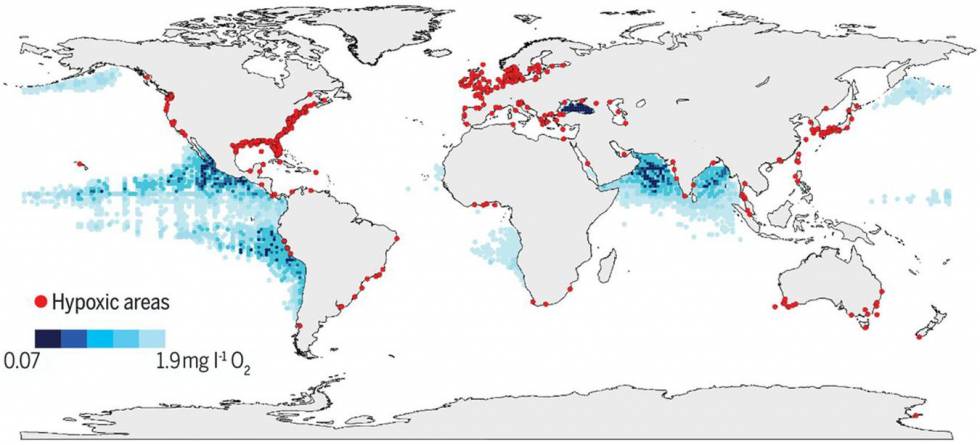
Oxygen levels in the ocean have fallen. Globally, sea water contains two percent less gaseous oxygen than in 1960. Locally, reductions have been much more severe. Too little oxygen causes problems for marine life, especially fish and larger organisms. Zones with good living conditions are shrinking.
Tuna, a very important resource, are among the most strongly affected species. The space suitable for cod is also getting more limited. How much this will change in the future, is still uncertain.
"We don't know yet how serious the lack of oxygen will be", says Nadine Goris, researcher at the Bjerknes Centre and NORCE.
She leads a new project aiming to present reliable projections of how oxygen conditions in the ocean will develop through this century.
Climate change and nutrients reduce oxygen levels
Over the last 50 years the extent of "dead" zones, with too little oxygen for fish and other larger organisms, has quadrupled.
According to a summary made by the International Union for Conservation of Nature and Natural Resources (IUCN), the greatest loss of oxygen has occured at depths between 100 and 300 meters in the Tropical and North Pacific, the Southern and Arctic Ocean and the South Atlantic Ocean.
Still, Nadine Goris points out, 75 percent of the total loss has occurred in waters deeper than 1200 meters.
The decline is mainly due to temperature rise, and in coastal regions also to the emission of nutrients from communities.
Warmer water can dissolve less oxygen and as a consequence takes up less oxygen from the atmosphere. In the upper thousand meters almost half of the reduction in oxygen is due to reduced uptake by surface waters. As a total, this reduction plays a less important role, as the greatest loss has occurred below 1200 meters.
When surface waters heat up, the density of the water goes down. This increases the stability of the water column, causing less circulation of the water masses. Water that is rich in oxygen is not as efficiently mixed downwards.
By changing the living-conditions of organisms, the water temperature and the circulation in the water also influence oxygen levels indirectly. Algal blooms and the sinking of dead organisms play a major role.
"It is difficult to separate the effects of these physical and biological factors", says Nadine Goris.
Nutrients emitted from agriculture, sewage and industry exacerbate the conditions in some coastal locations. High amounts of nutrients in the water can cause a bloom of algae that use all the oxygen.
Climate models underestimate the loss
So far, climate models have underestimated the global reduction of oxygen. While observations show that oxygen levels are 2 percent lower than around 1960, the models give a reduction of only 0,7 percent. The models also fail to reproduce the oxygen conditions as they are today.
These deviations give Nadine Goris reason to assume that the climate models' projections of future oxygen may also be too optimistic, both the oxygen levels and their geographic distribution. The uncertainty makes it difficult to give advice to policy makers.
The models need to be improved to provide more reliable projections of future development. This is the aim of the project she and the other researchers in her team have just started.
Improving projections of the North Atlantic
Using regional climate models to secure a more realistic regional ocean circulation than with global models, Nadine Goris' team works to improve simulations of the oxygen levels in the Nordic Seas and the northern part of the North Atlantic.
The researchers will also use new observations from the global BGO-ARGO network, consisting of buoys that measure various characteristics of the water while moving up and down through the water masses. These observations will reveal any shortcomings in the models, as well as make them better able to reproduce the biological conditions.
"Better projections of future oxygen levels are absolutely necessary for a targeted climate policy", says Nadine Goris. "Our goal is to aid in achieving that."

